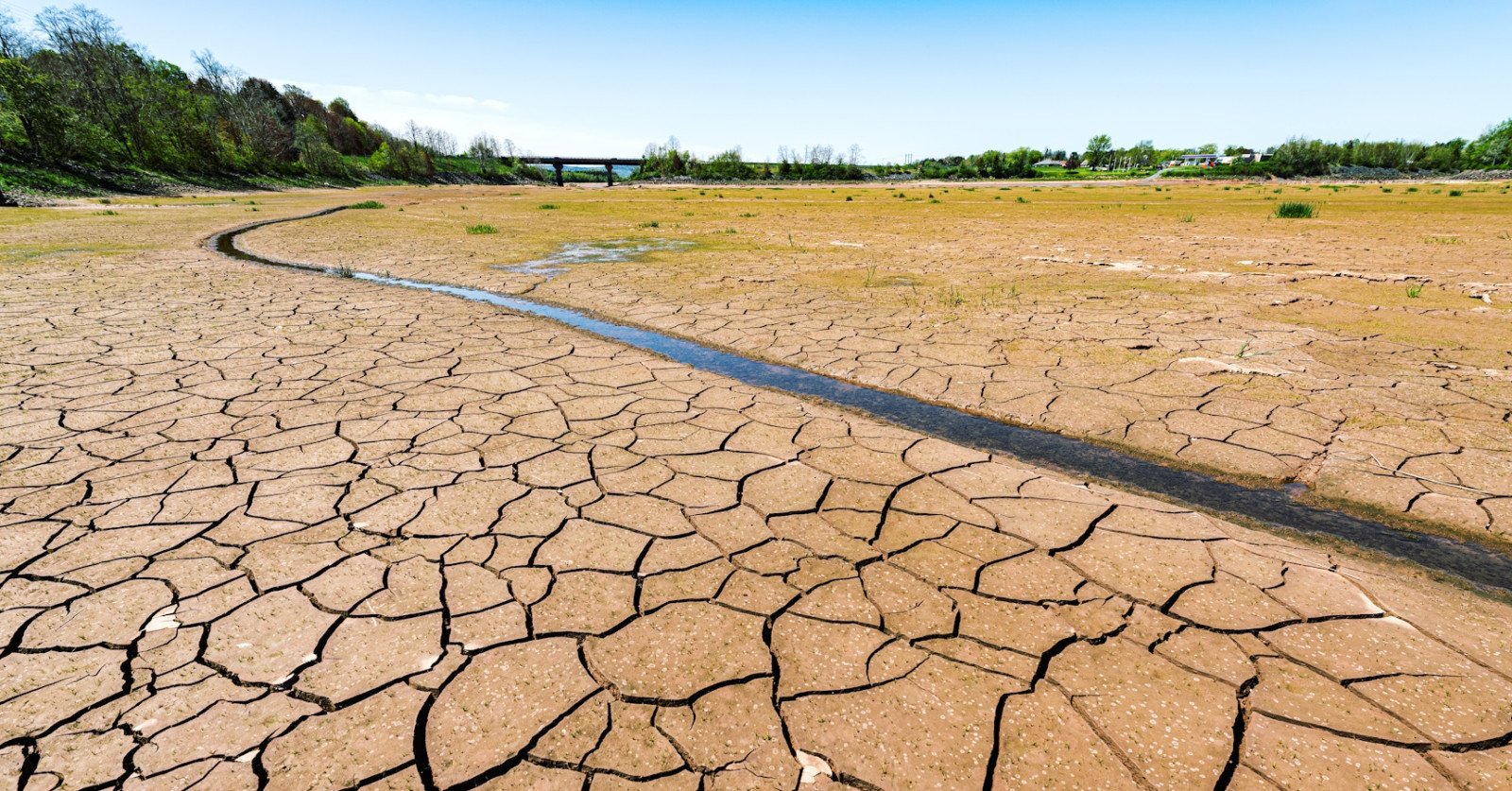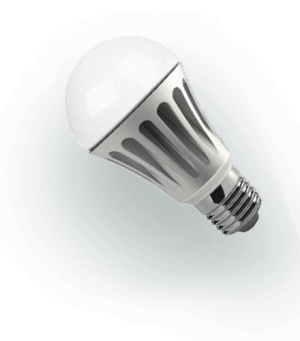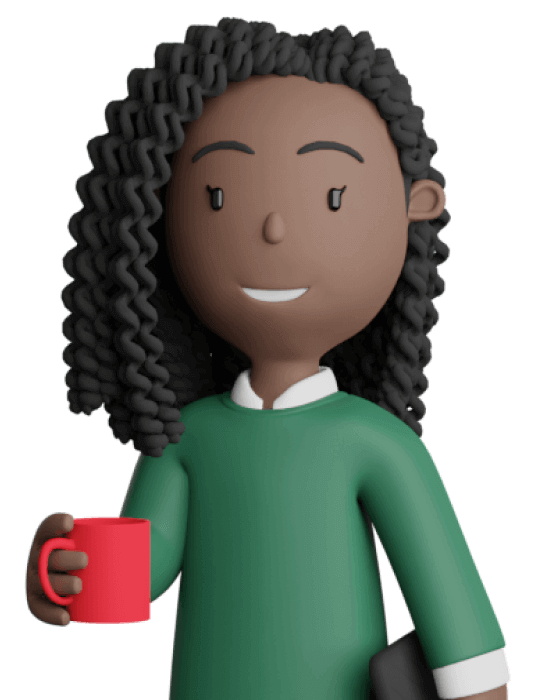What is drought?
Learn how to identify summer drought in B.C. and conservation tips to save water during drought.

Overview
Through a slideshow game and discussion, students discover what drought is and how important it is to conserve water, particularly in the summertime in B.C. They will watch a video to bring these ideas together.
Part of the Hydroelectricity and water use unit.
Instructions
What you'll need
- Laptop, projector, and screen
- Drought or not drought slide show
- Video: Drought - The Dr. Binocs Show (4:10) by Peekaboo Kidz
Slideshow activity
- Start by asking students to share how the weather differs in the summer and winter in B.C. They may share that winter is cold with rain, snow, or sleet, and that summer is hot and dry with little rain, sometimes for many months like from May to October.
- Tell the class that when it's hot in the summer and does not rain for many months, this is called ‘drought’.
- Start the Drought or not drought slide show.
- At slide 2, describe how water moves around our planet:
- When the sun heats water it evaporates from a liquid into the air as vapour.
- The warm air rises, hits the cold air above and condenses, forming clouds.
- The water droplets then precipitate down as rain, snow or sleet and gather in streams, rivers, lakes and oceans.
- This is called the water cycle as it describes how water cycles around our planet.
- At slide 3, ask students to spot what is missing from this picture. Precipitation like rain is missing. Remind students that if there is little or no rain for many months then we have drought. Tell students you will show them pictures in the summertime and ask them to identify if they think this is drought (dry with no rain) or not drought (wet and rainy). Assign a specific action for them to do indicating ‘drought’, for example put hands on head and a different action for ‘not drought’, for example jazz hands.
- Slide 4 shows a kid playing in puddles in the rain (not drought)
- Slide 5 shows dry, cracked soil (drought)
- Slide 6 shows ducks in mucky soil (not drought)
- Slide 7 shows dry forest after hot summer. The brown trees are showing evidence of drought or wildfire aftermath (drought)
- Slide 8 shows salmon swimming up a river (not drought)
- Slide 9 shows a more challenging one of green trees but dry soil and yellow grass, indicating that there is drought but the trees are still healthy (drought)
- Now ask students if we can have drought here in summer? Yes we can! Ask students to recall what happened last summer with the weather. Often in summer here in B.C. we have drought, meaning that it does not rain as much and we could run low on water. Have students consider how this might affect us, fish, animals and the environment. Students may reflect that we must be careful to use only the water that we need and not waste water so there is also enough water for the fish, animals and environment to share.
- Have students consider different ways we can save water. See teaching notes for ideas.
- Finish by showing a video that summarizes these concepts: Drought - The Dr. Binocs Show (4:10) by Peekaboo Kidz. As students watch the video, have them look for new ideas on how to save water, such as only running dishwashers and washing machines when full, or only filling the bathtub halfway.
Modify or extend this activity
- Continue this unit with the next activity: The recipe for electricity in B.C.
- Take students outside and look for evidence of drought or not drought. Examples could be thirsty wilting plants or rain running down the slide. Check the current drought conditions map so that you can speak to current conditions in your region.
Curriculum Fit
Science 2
Big Ideas
- Water is essential to all living things, and it cycles through the environment.
Content
- Water conservation
- The water cycle
Curriculum Competencies
Questioning and Predicting
- Demonstrate curiosity about the natural world
Processing and analyzing data and information
- Experience and interpret the local environment
Socials 2
Big Ideas
- Individuals have rights and responsibilities as global citizens.
Content
- Rights and responsibilities of individuals regionally and globally.
- Responsibility to the environment
Curricular competencies
- Ask questions, make inferences, and draw conclusions about the content and features of different types of sources.
Assessments
- Assess students’ participation in the discussions and drought or not drought game.
- Assess students’ understanding of how important it is to conserve water.
- Assess students’ creativity in thinking of ways to save water.
Teaching Notes
Drought
What is drought
Drought is a recurrent feature of climate involving a deficiency of precipitation over an extended period of time, resulting in a water shortage. Drought may be caused by combinations of insufficient snow accumulation, hot and dry weather, or a delay in rainfall.
Effects of drought
Drought impacts communities and agricultural production. Severe drought conditions pose significant risks to people and communities, leading to reduced water availability for households and businesses, reducing crop growth and quality, and affecting wildlife.
Water saving tips from BC Hydro
B.C. experienced a record drought in 2023, and we continue to monitor unpredictable weather patterns caused by climate change. It's more important than ever to manage water carefully, both for household consumption and for energy generation.
Here are a few water-saving tips you can incorporate at home:
- Fill your dishwasher full instead of handwashing dishes
- Let that lawn go brown in the summer, or rewild your yard
- Install low-flow showerheads and faucet aerators
- Get a rain barrel in your yard or schoolground
- Take shorter showers
- Fix leaky taps
- Don't leave water running when not in use
Current drought conditions in BC
The B.C. Drought Information Portal provides a real-time map showing current drought conditions in all regions of B.C. We recommend checking this before your discussion about drought so that you can explain whether or not your region is experiencing drought.
Consider following up the lesson by telling students when conditions have changed. For example, if you cover the lesson during a period without drought, let the students know if the region has entered a period of drought; remind them of the activity you did and ask them to recall the water-saving tips that were discussed.







